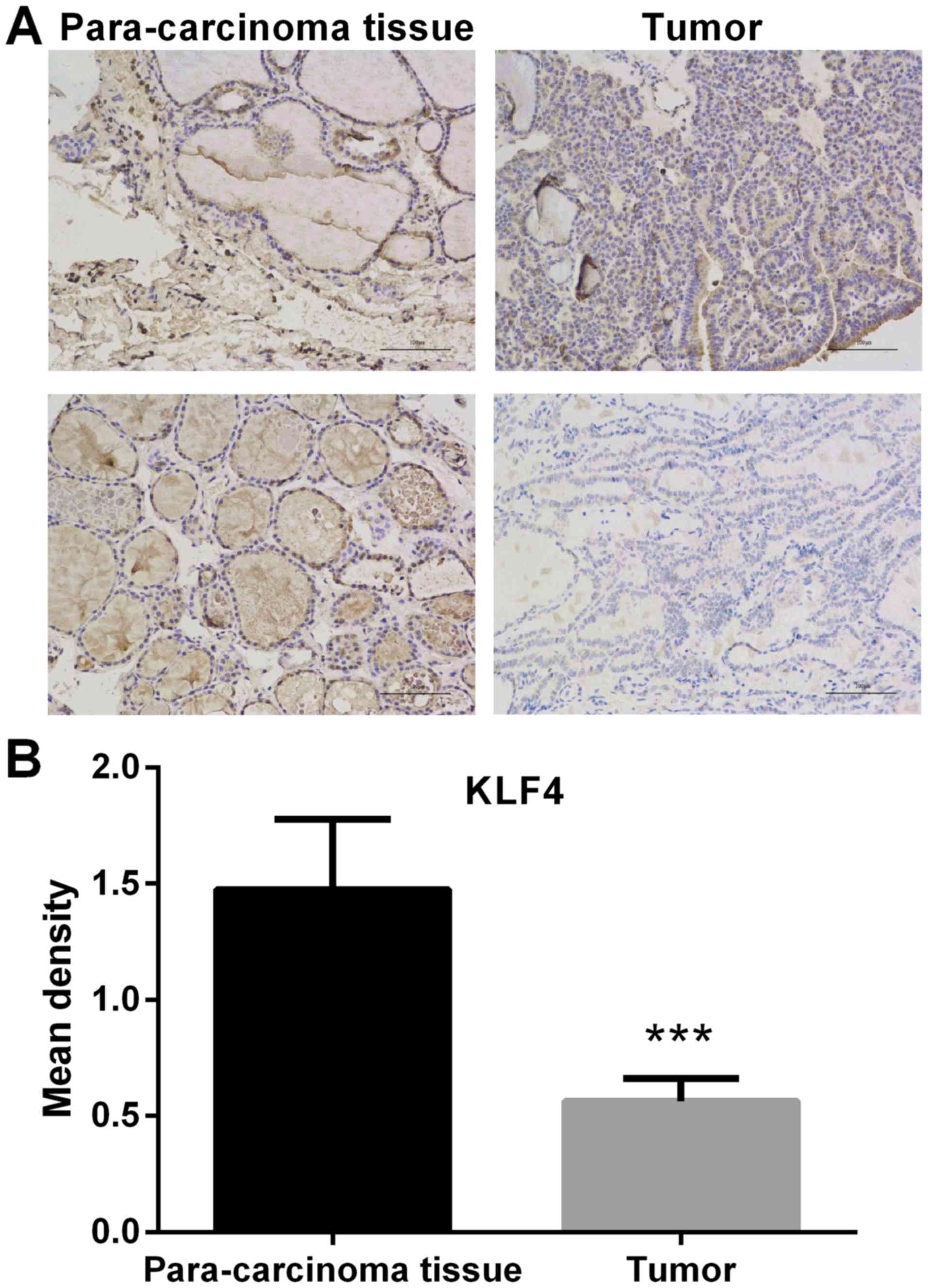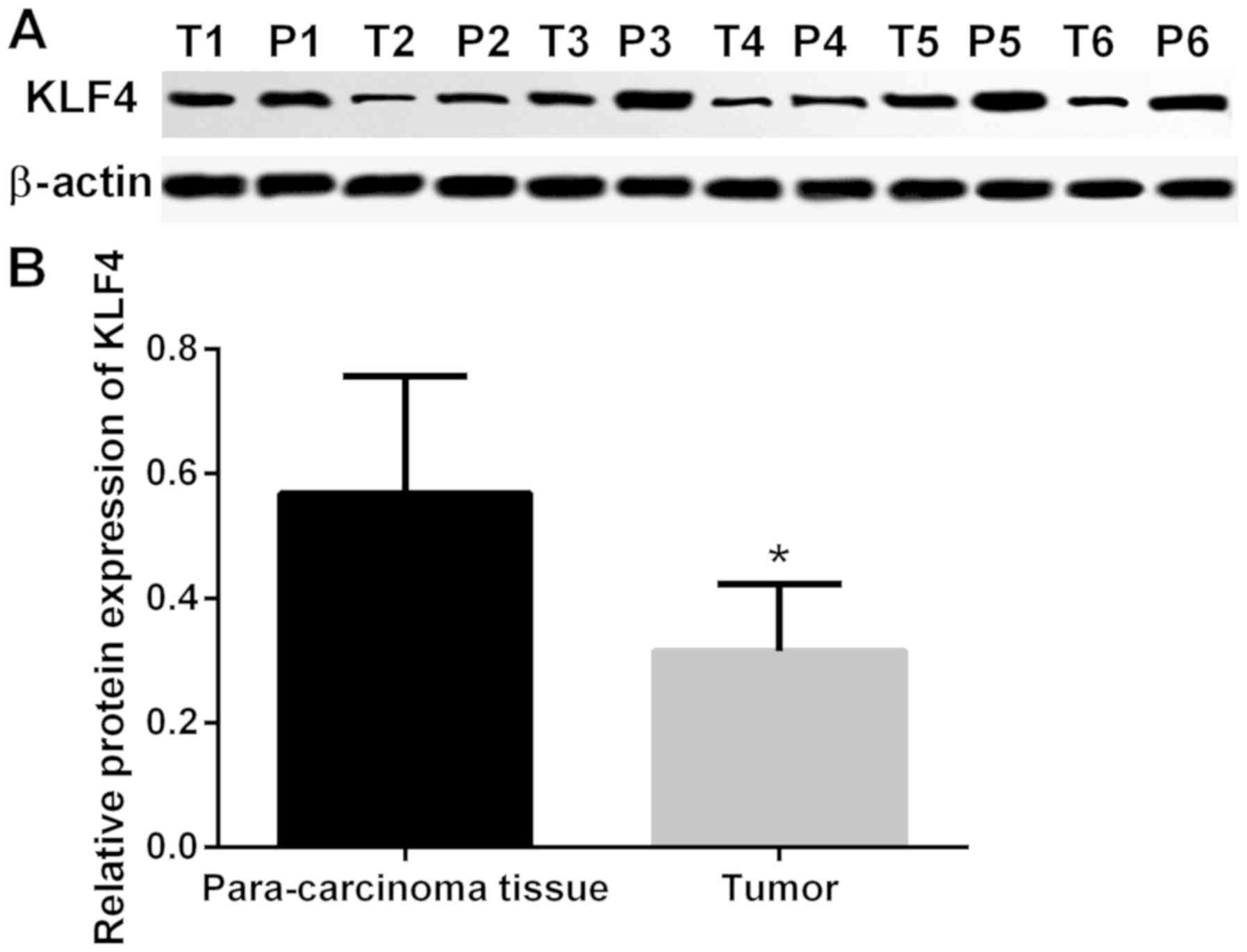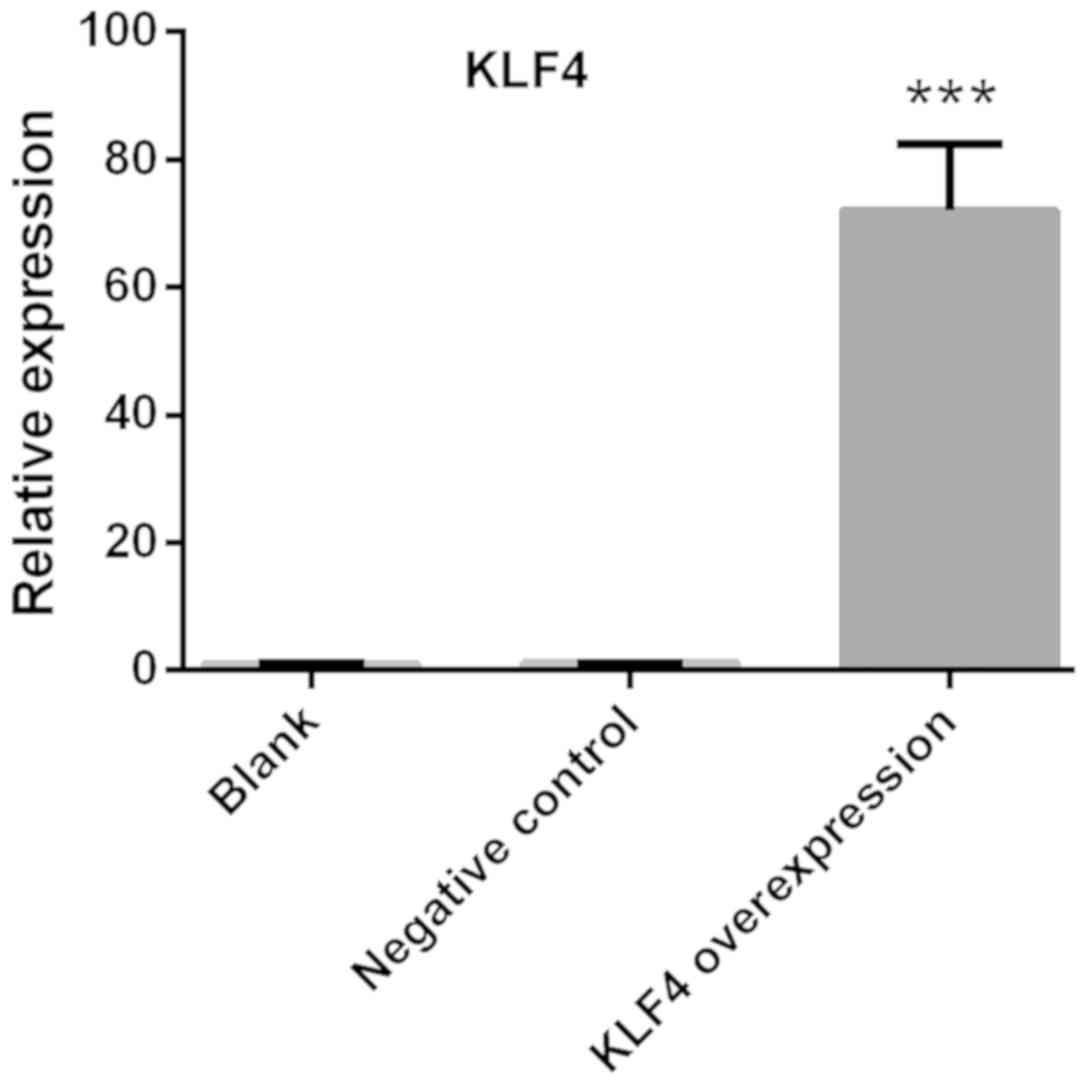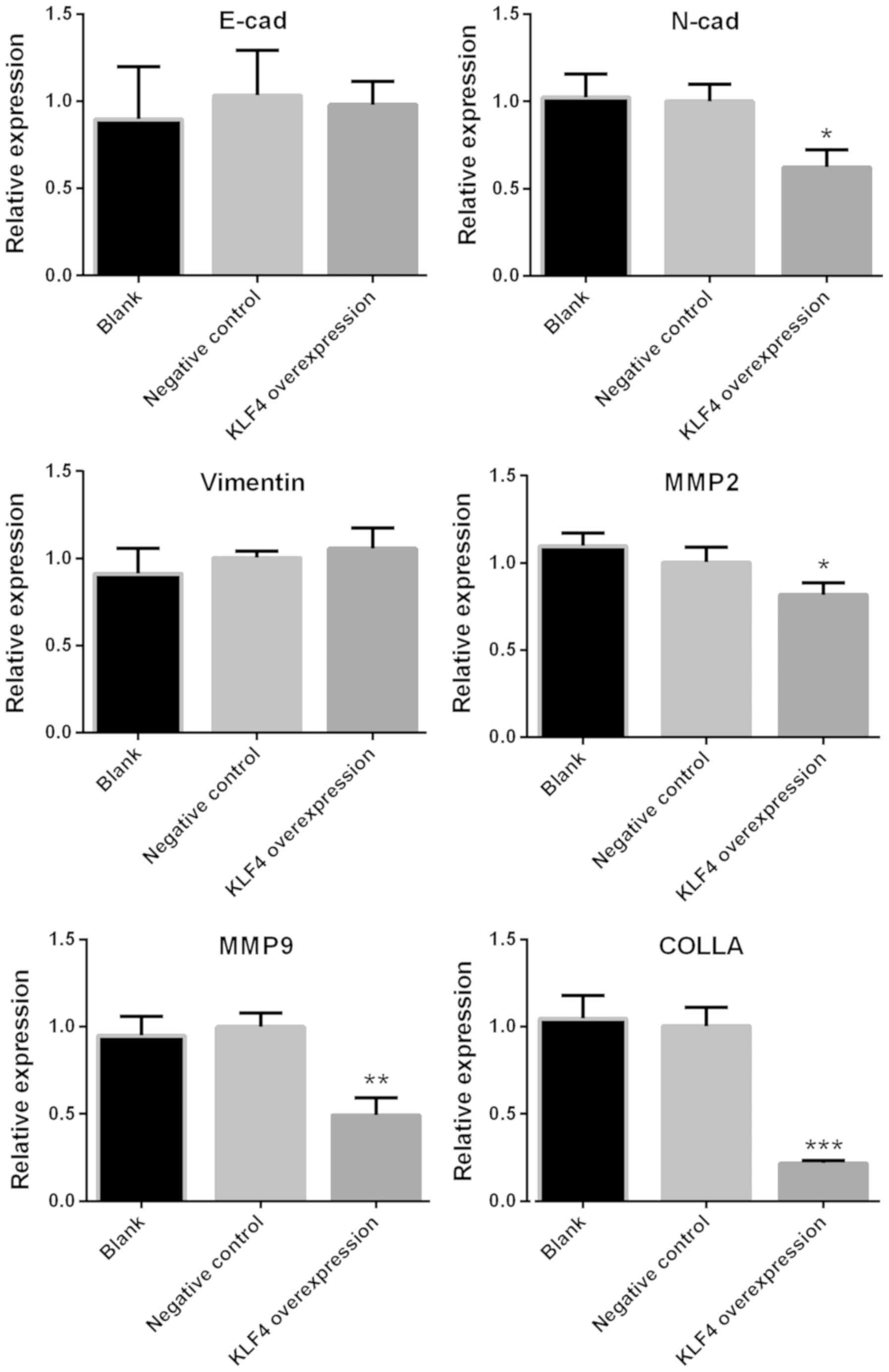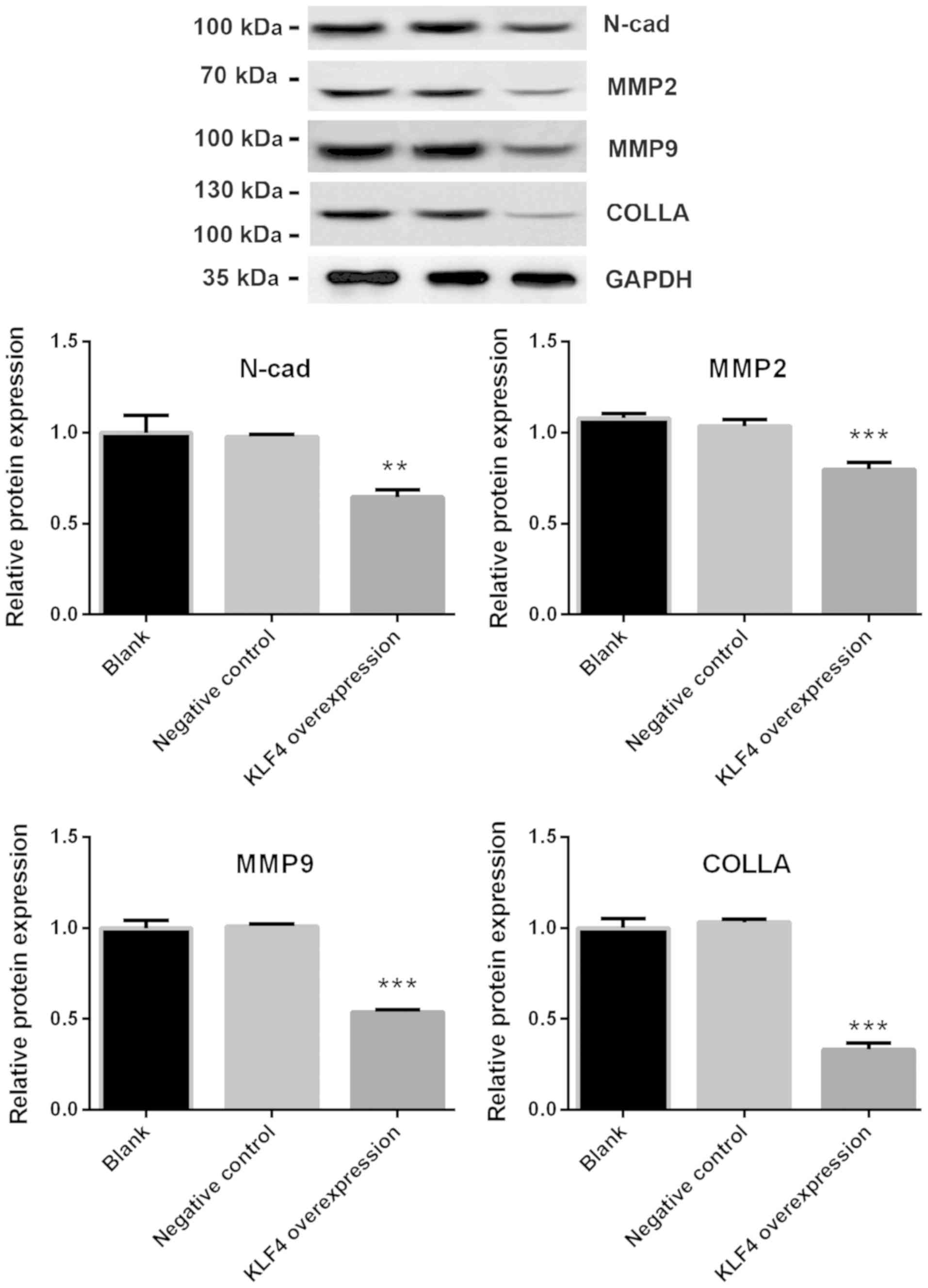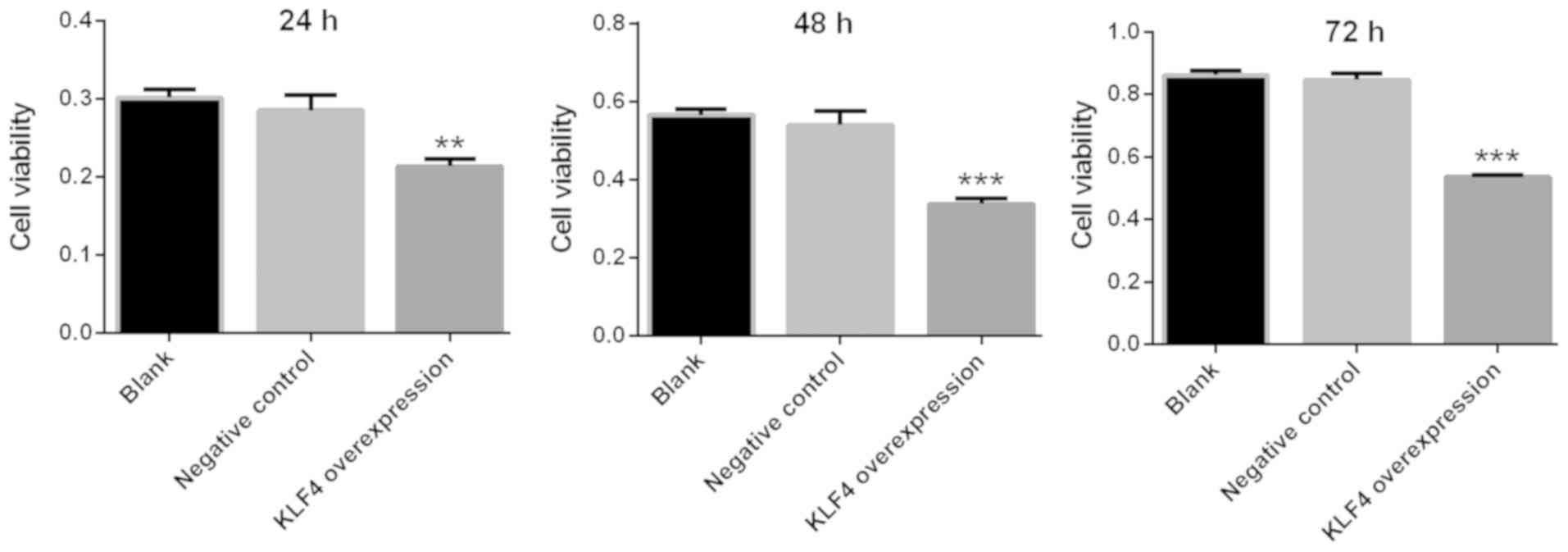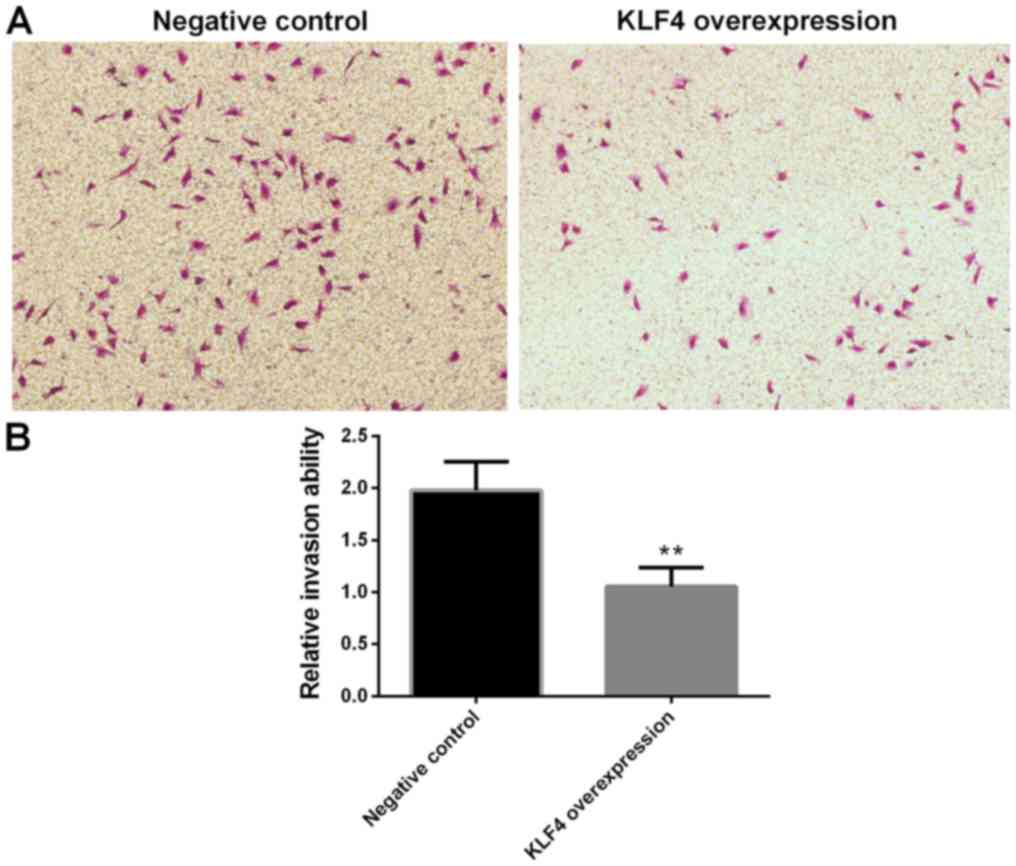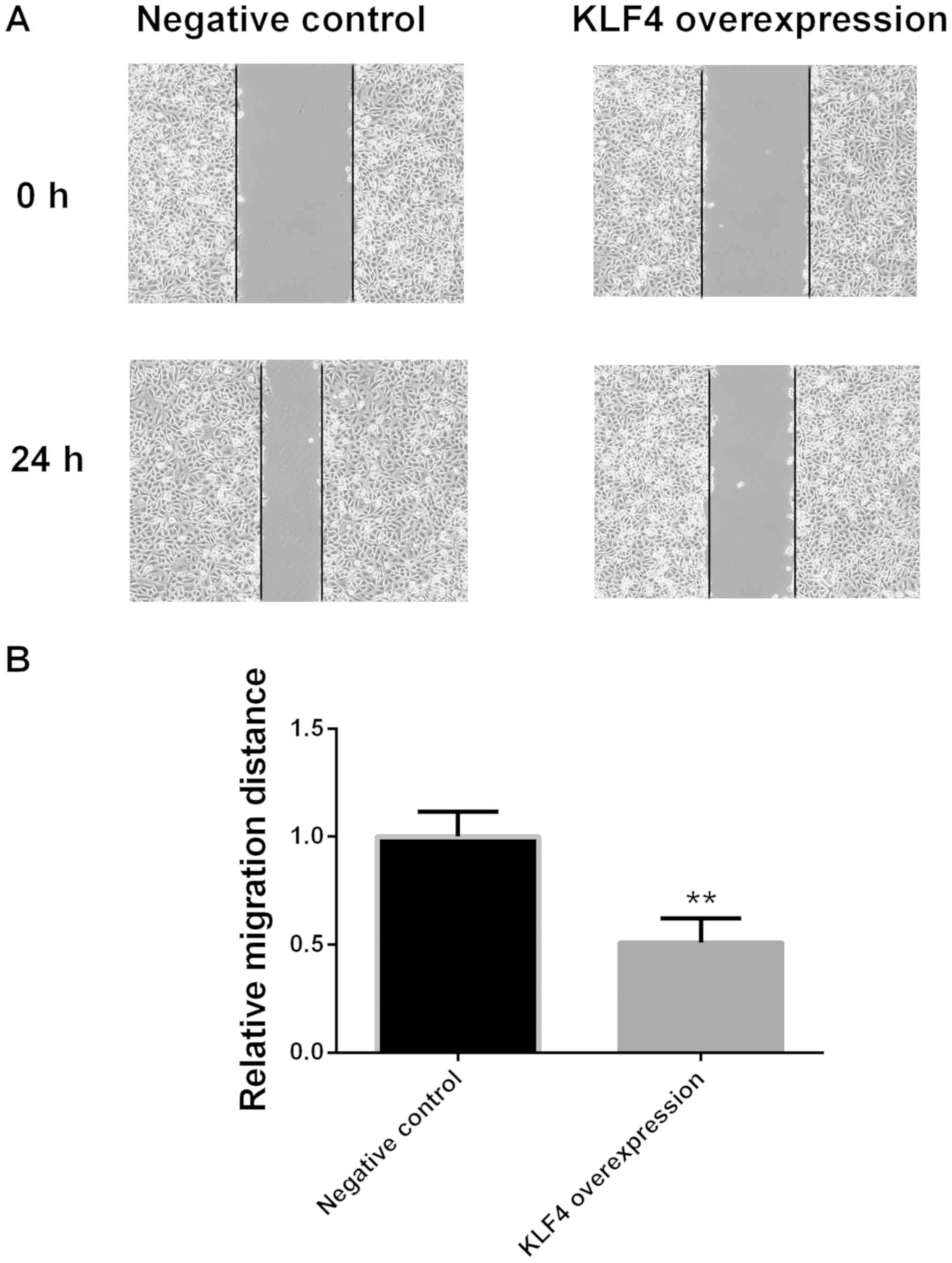|
1
|
GBD 2015 Disease and Injury Incidence and
Prevalence Collaborators: Global, regional, and national incidence,
prevalence, and years lived with disability for 310 diseases and
injuries, 1990–2015: A systematic analysis for the Global Burden of
Disease Study 2015. Lancet. 388:1545–1602. 2016. View Article : Google Scholar : PubMed/NCBI
|
|
2
|
Chen J, Hou H, Chen H, Luo Y, He Y, Zhang
L, Zhang Y, Liu H, Zhang F, Liu Y, et al: Identification of
β-hydroxybutyrate as a potential biomarker for female papillary
thyroid cancer. Bioanalysis. 11:461–470. 2019. View Article : Google Scholar : PubMed/NCBI
|
|
3
|
James BC, Timsina L, Graham R, Angelos P
and Haggstrom DA: Changes in total thyroidectomy versus thyroid
lobectomy for papillary thyroid cancer during the past 15 years.
Surgery. 166:41–47. 2019. View Article : Google Scholar : PubMed/NCBI
|
|
4
|
Galuppini F, Pennelli G and Rugge M: The
rising incidence of papillary thyroid cancer: More cancers or more
assessments? Indian J Cancer. 56:183–184. 2019. View Article : Google Scholar : PubMed/NCBI
|
|
5
|
Kazaure HS, Roman SA and Sosa JA:
Aggressive variants of papillary thyroid cancer: Incidence,
characteristics and predictors of survival among 43,738 patients.
Ann Surg Oncol. 19:1874–1880. 2011. View Article : Google Scholar : PubMed/NCBI
|
|
6
|
Richards ML: Thyroid cancer genetics:
Multiple endocrine neoplasia type 2, non-medullary familial thyroid
cancer, and familial syndromes associated with thyroid cancer. Surg
Oncol Clin N Am. 1839–52. (viii)2009. View Article : Google Scholar : PubMed/NCBI
|
|
7
|
Zhu M, Zhang N and He S: Transcription
factor KLF4 modulates microRNA-106a that targets Smad7 in gastric
cancer. Pathol Res Pract. 1524672019. View Article : Google Scholar : PubMed/NCBI
|
|
8
|
Zhuan B, Lu Y, Chen Q, Zhao X, Li P, Yuan
Q and Yang Z: Overexpression of the long noncoding RNA TRHDE-AS1
inhibits the progression of lung cancer via the miRNA-103/KLF4
axis. J Cell Biochem. May 22–2019.(Epub ahead of print). doi:
10.1002/jcb.29029. View Article : Google Scholar : PubMed/NCBI
|
|
9
|
Yang VW, Liu Y, Kim J, Shroyer KR and
Bialkowska AB: Increased genetic instability and accelerated
progression of colitis-associated colorectal cancer through
intestinal epithelium-specific deletion of Klf4. Mol Cancer Res.
17:165–176. 2019. View Article : Google Scholar : PubMed/NCBI
|
|
10
|
Okuda H, Xing F, Pandey PR, Sharma S,
Watabe M, Pai SK, Mo YY, Iiizumi-Gairani M, Hirota S, Liu Y, et al:
miR-7 suppresses brain metastasis of breast cancer stem-like cells
by modulating KLF4. Cancer Res. 73:1434–1444. 2013. View Article : Google Scholar : PubMed/NCBI
|
|
11
|
Li H, Wang J, Xiao W, Xia D, Lang B, Wang
T, Guo X, Hu Z, Ye Z and Xu H: Epigenetic inactivation of KLF4 is
associated with urothelial cancer progression and early recurrence.
J Urol. 191:493–501. 2013. View Article : Google Scholar : PubMed/NCBI
|
|
12
|
Guo K, Cui J, Quan M, Xie D, Jia Z, Wei D,
Wang L, Gao Y, Ma Q and Xie K: The novel KLF4/MSI2 signaling
pathway regulates growth and metastasis of pancreatic cancer. Clin
Cancer Res. 23:687–696. 2017. View Article : Google Scholar : PubMed/NCBI
|
|
13
|
Akaogi K, Nakajima Y, Ito I, Kawasaki S,
Oie SH, Murayama A, Kimura K and Yanagisawa J: KLF4 suppresses
estrogen-dependent breast cancer growth by inhibiting the
transcriptional activity of ERalpha. Oncogene. 28:2894–2902. 2009.
View Article : Google Scholar : PubMed/NCBI
|
|
14
|
Ding X, Zhong T, Jiang L, Huang J, Xia Y
and Hu R: miR-25 enhances cell migration and invasion in
non-small-cell lung cancer cells via ERK signaling pathway by
inhibiting KLF4. Mol Med Rep. 17:7005–7016. 2018.PubMed/NCBI
|
|
15
|
Cittelly DM, Finlay-Schultz J, Howe EN,
Spoelstra NS, Axlund SD, Hendricks P, Jacobsen BM, Sartorius CA and
Richer JK: Progestin suppression of miR-29 potentiates
dedifferentiation of breast cancer cells via KLF4. Oncogene.
32:2555–2564. 2012. View Article : Google Scholar : PubMed/NCBI
|
|
16
|
Wong AS and Gumbiner BM:
Adhesion-independent mechanism for suppression of tumor cell
invasion by E-cadherin. J Cell Biol. 161:1191–1203. 2003.
View Article : Google Scholar : PubMed/NCBI
|
|
17
|
Makrigiannakis A, Coukos G, Blaschuk O and
Coutifaris C: Follicular atresia and luteolysis. Evidence of a role
for N-cadherin. Ann N Y Acad Sci. 900:46–55. 2000. View Article : Google Scholar : PubMed/NCBI
|
|
18
|
Yamashita N, Tokunaga E, Iimori M, Inoue
Y, Tanaka K, Kitao H, Saeki H, Oki E and Maehara Y: Epithelial
paradox: Clinical significance of coexpression of E-cadherin and
vimentin with regard to invasion and metastasis of breast cancer.
Clin Breast Cancer. 18:e1003–e1009. 2018. View Article : Google Scholar : PubMed/NCBI
|
|
19
|
Winerdal ME, Krantz D, Hartana CA,
Zirakzadeh AA, Linton L, Bergman EA, Rosenblatt R, Vasko J,
Alamdari F, Hansson J, et al: Urinary bladder cancer Tregs suppress
MMP2 and potentially regulate invasiveness. Cancer Immunol Res.
6:528–538. 2018. View Article : Google Scholar : PubMed/NCBI
|
|
20
|
Klassen LMB, Chequin A, Manica GCM,
Biembengut IV, Toledo MB, Baura VA, de O Pedrosa F, Ramos EAS,
Costa FF, de Souza EM and Klassen G: MMP9 gene expression
regulation by intragenic epigenetic modifications in breast cancer.
Gene. 642:461–466. 2018. View Article : Google Scholar : PubMed/NCBI
|
|
21
|
Nielsen SH, Willumsen N, Brix S, Sun S,
Manon-Jensen T, Karsdal M and Genovese F: Tumstatin, a matrikine
derived from collagen type IVα3, is elevated in serum from patients
with non-small cell lung cancer. Transl Oncol. 11:528–534. 2018.
View Article : Google Scholar : PubMed/NCBI
|
|
22
|
Fujimori M and Sakauchi G: TNM
classification-thyroid cancer. Gan No Rinsho. 13:320–322. 1967.(In
Japanese). PubMed/NCBI
|
|
23
|
Haugen BR, Alexander EK, Bible KC, Doherty
GM, Mandel SJ, Nikiforov YE, Pacini F, Randolph GW, Sawka AM,
Schlumberger M, et al: 2015 American thyroid association management
guidelines for adult patients with thyroid nodules and
differentiated thyroid cancer. Thyroid. 26:1–33. 2016. View Article : Google Scholar : PubMed/NCBI
|
|
24
|
Mancini P, Bonanno Ferraro G, Iaconelli M,
Suffredini E, Valdazo-González B, Della Libera S, Divizia M and La
Rosa G: Molecular characterization of human Sapovirus in untreated
sewage in Italy by amplicon-based Sanger and next-generation
sequencing. J Appl Microbiol. 126:324–331. 2019. View Article : Google Scholar : PubMed/NCBI
|
|
25
|
Livak KJ and Schmittgen TD: Analysis of
relative gene expression data using real-time quantitative PCR and
the 2(-Delta Delta C(T)) method. Methods. 25:402–408. 2001.
View Article : Google Scholar : PubMed/NCBI
|
|
26
|
Ma Y, Wu L, Liu X, Xu Y, Shi W, Liang Y,
Yao L, Zheng J and Zhang J: KLF4 inhibits colorectal cancer cell
proliferation dependent on NDRG2 signaling. Oncol Rep. 38:975–984.
2017. View Article : Google Scholar : PubMed/NCBI
|
|
27
|
Zhou Y, Hofstetter WL, He Y, Hu W, Pataer
A, Wang L, Wang J, Zhou Y, Yu L, Fang B and Swisher SG: KLF4
inhibition of lung cancer cell invasion by suppression of SPARC
expression. Cancer Biol Ther. 9:507–513. 2010. View Article : Google Scholar : PubMed/NCBI
|
|
28
|
Zhou H, Liu Y, Zhu R, Ding F, Wan Y, Li Y
and Liu Z: FBXO32 suppresses breast cancer tumorigenesis through
targeting KLF4 to proteasomal degradation. Oncogene. 36:3312–3321.
2017. View Article : Google Scholar : PubMed/NCBI
|
|
29
|
Zhao L, Han T, Li Y, Sun J, Zhang S, Liu
Y, Shan B, Zheng D and Shi J: The lncRNA SNHG5/miR-32 axis
regulates gastric cancer cell proliferation and migration by
targeting KLF4. FASEB J. 31:893–903. 2016. View Article : Google Scholar : PubMed/NCBI
|
|
30
|
Yang Y, Goldstein BG, Chao HH and Katz JP:
KLF4 and KLF5 regulate proliferation, apoptosis and invasion in
esophageal cancer cells. Cancer Biol Ther. 4:1216–1221. 2005.
View Article : Google Scholar : PubMed/NCBI
|
|
31
|
Yu T, Chen X, Zhang W, Liu J, Avdiushko R,
Napier DL, Liu AX, Neltner JM, Wang C, Cohen D and Liu C: KLF4
regulates adult lung tumor-initiating cells and represses
K-Ras-mediated lung cancer. Cell Death Differ. 23:207–215. 2015.
View Article : Google Scholar : PubMed/NCBI
|
|
32
|
Nagi C, Guttman M, Jaffer S, Qiao R, Keren
R, Triana A, Li M, Godbold J, Bleiweiss IJ and Hazan RB: N-cadherin
expression in breast cancer: Correlation with an aggressive
histologic variant-invasive micropapillary carcinoma. Breast Cancer
Res Treat. 94:225–235. 2005. View Article : Google Scholar : PubMed/NCBI
|
|
33
|
Yan X, Yan L, Liu S, Shan Z, Tian Y and
Jin Z: N-cadherin, a novel prognostic biomarker, drives malignant
progression of colorectal cancer. Mol Med Rep. 12:2999–3006. 2015.
View Article : Google Scholar : PubMed/NCBI
|
|
34
|
Zhang X, Liu G, Kang Y, Dong Z, Qian Q and
Ma X: N-cadherin expression is associated with acquisition of EMT
phenotype and with enhanced invasion in erlotinib-resistant lung
cancer cell lines. PLoS One. 8:e576922013. View Article : Google Scholar : PubMed/NCBI
|
|
35
|
Guan H, Guo Z, Liang W, Li H, Wei G, Xu L,
Xiao H and Li Y: Trop2 enhances invasion of thyroid cancer by
inducing MMP2 through ERK and JNK pathways. BMC Cancer. 17:4862017.
View Article : Google Scholar : PubMed/NCBI
|
|
36
|
Wang H, Zhu Y, Zhao M, Wu C, Zhang P, Tang
L, Zhang H, Chen X, Yang Y and Liu G: miRNA-29c suppresses lung
cancer cell adhesion to extracellular matrix and metastasis by
targeting integrin β1 and matrix metalloproteinase 2 (MMP2). PLoS
One. 8:e701922013. View Article : Google Scholar : PubMed/NCBI
|
|
37
|
Zhang K, Chen X, Zhou J, Yang C, Zhang M,
Chao M, Zhang L and Liang C: Association between MMP2-1306 C/T
polymorphism and prostate cancer susceptibility: A meta-analysis
based on 3906 subjects. Oncotarget. 8:45020–45029. 2017.PubMed/NCBI
|
|
38
|
Yang F, Yu N, Wang H, Zhang C, Zhang Z, Li
Y, Li D, Yan L, Liu H and Xu Z: Downregulated expression of
hepatoma-derived growth factor inhibits migration and invasion of
prostate cancer cells by suppressing epithelial-mesenchymal
transition and MMP2, MMP9. PLoS One. 13:e01907252018. View Article : Google Scholar : PubMed/NCBI
|
|
39
|
Zhen Y, Liu J, Huang Y, Wang Y, Li W and
Wu J: miR-133b inhibits cell growth, migration, and invasion by
targeting MMP9 in non-small cell lung cancer. Oncol Res.
25:1109–1116. 2016. View Article : Google Scholar : PubMed/NCBI
|
|
40
|
Revert F, Revert-Ros F, Blasco R, Artigot
A, López-Pascual E, Gozalbo-Rovira R, Ventura I,
Gutiérrez-Carbonell E, Roda N, Ruíz-Sanchis D, et al: Selective
targeting of collagen IV in the cancer cell microenvironment
reduces tumor burden. Oncotarget. 9:11020–11045. 2018. View Article : Google Scholar : PubMed/NCBI
|
|
41
|
Xia T, He Q, Shi K, Wang Y, Yu Q, Zhang L,
Zhang Q, Gao H, Ma L and Liu J: Losartan loaded liposomes improve
the antitumor efficacy of liposomal paclitaxel modified with pH
sensitive peptides by inhibition of collagen in breast cancer.
Pharm Dev Technol. 23:13–21. 2016. View Article : Google Scholar : PubMed/NCBI
|
|
42
|
Tian C, Yao S, Liu L, Ding Y, Ye Q, Dong
X, Gao Y, Yang N and Li Q: Klf4 inhibits tumor growth and
metastasis by targeting microRNA-31 in human hepatocellular
carcinoma. Int J Mol Med. 39:47–56. 2016. View Article : Google Scholar : PubMed/NCBI
|
|
43
|
Zhang J, Zhu Z, Wu H, Yu Z, Rong Z, Luo Z,
Xu Y, Huang K, Qiu Z and Huang C: PODXL, negatively regulated by
KLF4, promotes the EMT and metastasis and serves as a novel
prognostic indicator of gastric cancer. Gastric Cancer. 22:48–59.
2019. View Article : Google Scholar : PubMed/NCBI
|
|
44
|
Zhai F, Cao C, Zhang L and Zhang J:
miR-543 promotes colorectal cancer proliferation and metastasis by
targeting KLF4. Oncotarget. 8:59246–59256. 2017. View Article : Google Scholar : PubMed/NCBI
|
|
45
|
Yan Y, Li Z, Kong X, Jia Z, Zuo X, Gagea
M, Huang S, Wei D and Xie K: KLF4-mediated suppression of CD44
signaling negatively impacts pancreatic cancer stemness and
metastasis. Cancer Res. 76:2419–2431. 2016. View Article : Google Scholar : PubMed/NCBI
|















